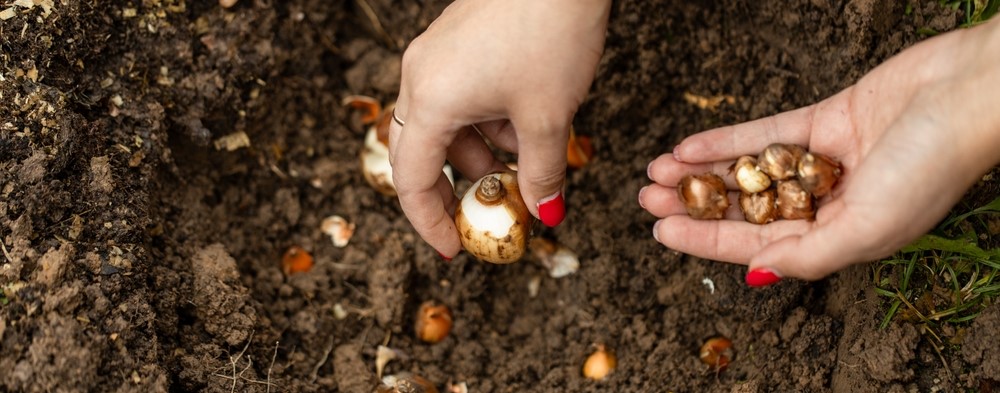Anticipation with spring bulbs: Preparing for spring in autumn
23-10-2024
Did you know you can prepare for spring in the autumn? The fall is the perfect time to plant colourful spring bloomers. Think of bulbs like tulips and daffodils, as well as lesser-known varieties that bloom in winter, such as yellow winter aconites. Bulbs are versatile and can be planted in various locations: among perennials, in the grass, or in containers and pots on your terrace or balcony.

When and Where to Plant Spring Bulbs?
You can plant bulbs almost anywhere outside right now, as they need a cold (frost) period to bloom. You can even plant them in December, as long as it isn’t freezing and the ground isn’t frozen. Ensure you plant the bulbs in well-draining soil; too much moisture can cause them to rot. Small bulbs also thrive well in pots or containers. Make sure there are holes in the bottom and place a layer of potsherds and clay granules at the base. Mix some sand into the potting soil to prevent rot.
In your lawn or garden, you can plant snowdrops, crocuses, daffodils, star hyacinths, and Eastern anemones (Anemone blanda). Lift a section of grass with a spade, plant the bulbs, and replace the grass. Firm it down if necessary. It’s best to mow the grass in the spring only after the foliage of the bulbs has completely died back, or to mow around it. For good measure, you can place a label or stick where you’ve planted the bulbs.
Check the label or ask whether the bulbs prefer a sunny or more shaded location. Tulips and daffodils typically thrive in the sun, while bluebells and edible wild garlic prefer shade.
How to Plant Spring Bulbs?
It’s important to plant bulbs, especially the smaller ones, as soon as possible to prevent them from drying out. The golden rule is to plant the bulb two to three times as deep as its height. Make sure the pointy end is facing upwards. If you can’t clearly see the top of a bulb, plant it on its side; the leaves and flowers will grow upwards naturally.
For spacing, keep about twice their own width between the bulbs. Ensure that the bulbs do not touch each other, whether in the ground or in pots. For a natural effect, you can scatter the bulbs loosely over the area where you want to plant them and position them where they land, provided they don’t touch.
In pots and containers, you can combine different types. This is known as the 'lasagne method' because it involves layering. Place the largest and latest blooming varieties at the bottom, followed by a layer of potting soil mixed with sand, and then plant the smaller, early-blooming bulbs in that layer. Make sure the bulbs do not touch each other and are not too close to the edge of the pot (to prevent freezing). By planting winter pansies on top, you’ll soon enjoy blooming pots and containers.
Important Bulb Facts
To ensure a long flowering period, you can cut off the spent flower heads, but leave the leaves intact. The leaves are essential, as the bulbs draw their energy from them to bloom again next year. Early-flowering bulbs are also fantastic for insects and help to increase biodiversity!
With these tips, you’ll be able to enjoy a stunning garden full of colour next spring. So, what are you waiting for? Plant your spring bulbs now while the soil is still warm, and look forward to the spectacle that spring will bring!
